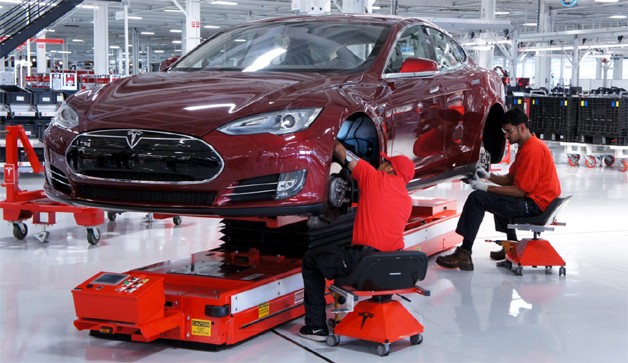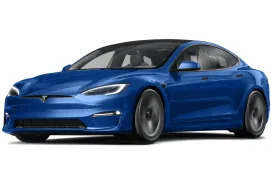Tesla Motors has been spending way too much money building each Model S. That reality, and how the company is remedying the situation, was one of the main talking points during a conference call that followed the release of the automaker's fourth-quarter letter to investors and financial results. The discussion offered a great look inside a company that is moving from its start-up stage to becoming a full-blown, car-building, money-making operation.
Another area where Tesla is achieving large cost savings is in its supply chain. As a startup, suppliers didn't offer Tesla the same sort of deals they might to an established OEM. They used industry estimates of 1,500 units per year – rather than Tesla's figure of 20,000 – to set pricing. That's now changing and, as the company meets certain volume targets, the prices (particularly for the all-important battery cells it's sourcing from Panasonic) are falling to more reasonable levels.

Even the supply-chain logistics are improving as its industrial relationships mature. Musk told one anecdote that encapsulated many of the company's teething experiences. Apparently, it was taking longer than the 30-day financial terms in place to receive 21-inch tires from a tire supplier, so that the company was overdue payment on goods that hadn't yet been delivered. The supplier then put a hold on further shipments, creating a hiccup in the production process and forcing Tesla to ship some cars with 19-inch wheels with a promise to replace them at a later date.
Hopefully, these lessons learned will help the California company exceed performance expectations, just like the cars it produces. Market analysts on the call didn't see it that way, and punched the TSLA stock price in the face – knocking it back 8.77 percent on the day following the release.
To achieve the first-quarter profitability target that CEO Elon Musk says he expects to hit, Tesla is focusing on improving production efficiency and increasing gross margin, rather than just increasing the rate at which they turn out cars. Tesla could build as many as 500 Model S vehicles per week – instead of the current 400 – but wants to reduce the cost per car before it turns up the production volume. Musk reiterated the precise goal during the call, saying, "I'm highly confident that we'll be above 25 percent gross margin, without considering zero-emission credits, by the end of this year"Tesla could bump up production to 500 Model S EVs a week, but will focus on reducing costs first.
There are several ways to pursue that target, one of which is reducing the man-hours required to pump out each Model S. In December, at the height of its efforts to achieve a 20,000-vehicle annualized production rate, workers were averaging something like 68 hours a week, Musk said (and also participated in). Obviously, that's expensive in terms of paying additional overtime wages, and can lead to employee burn out if sustained. "The amount of overtime required to achieve 400 cars per week was pretty extreme. That has improved pretty dramatically," Musk said. That number is now down to about 50 hours a week and should drop to the mid-40's sometime next month, Musk said. At the same time, the company is working to greatly reduce the number of temporary workers it employs and increasing, somewhat, the ranks of its full-time team."The amount of overtime required to achieve 400 cars per week was pretty extreme."
Another area where Tesla is achieving large cost savings is in its supply chain. As a startup, suppliers didn't offer Tesla the same sort of deals they might to an established OEM. They used industry estimates of 1,500 units per year – rather than Tesla's figure of 20,000 – to set pricing. That's now changing and, as the company meets certain volume targets, the prices (particularly for the all-important battery cells it's sourcing from Panasonic) are falling to more reasonable levels.

Even the supply-chain logistics are improving as its industrial relationships mature. Musk told one anecdote that encapsulated many of the company's teething experiences. Apparently, it was taking longer than the 30-day financial terms in place to receive 21-inch tires from a tire supplier, so that the company was overdue payment on goods that hadn't yet been delivered. The supplier then put a hold on further shipments, creating a hiccup in the production process and forcing Tesla to ship some cars with 19-inch wheels with a promise to replace them at a later date.
To get things moving, Tesla ended up flying the tires from the Czech Republic to California – not an inexpensive proposition. Said Musk, "I wanted to punch myself in the face for that one." It was, indeed, a memorable line that helped sum up the frustrations of moving through an awkward developmental stage."I wanted to punch myself in the face for that one."
Hopefully, these lessons learned will help the California company exceed performance expectations, just like the cars it produces. Market analysts on the call didn't see it that way, and punched the TSLA stock price in the face – knocking it back 8.77 percent on the day following the release.












Sign in to post
Please sign in to leave a comment.
Continue